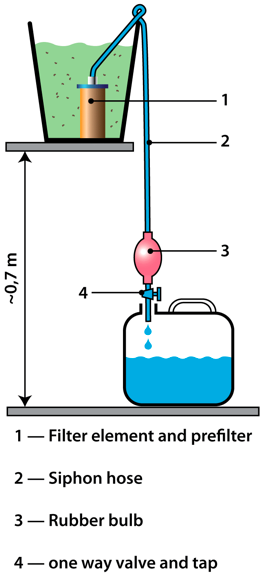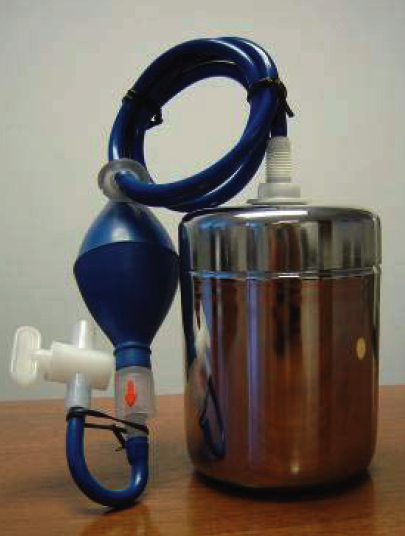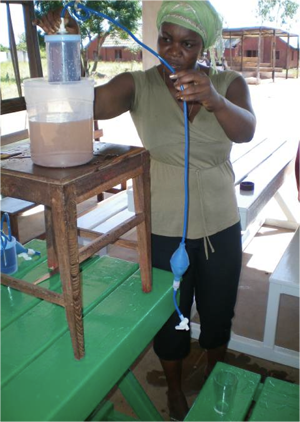Siphon filter
| |
What is a siphon filter?
The Siphon filter is a candle-type water filter which uses siphon pressure to force water through a high-quality ceramic filter element. The innovative useage of the siphon results in a high flow rate of 4-6 liters per hour. The Siphon filter is very compact, as only a filter element, a plastic hose, and a valve are needed, while existing storage containers can be used. The filter is designed as a point-of-use filter in households. The filter element is impregnated with silver in order to increase the efficiency of the filter.
How does it remove contamination?
Operation
The filter element is placed in a container with contaminated water, situated about 70 cm above the clean water container. The siphon action is started by squeezing the rubber bulb. The siphon pressure forces the water through the filter element, ensuring a high flow of water.
Cleaning of the filter After some time, the flow rate may reduce because of clogging of the filter element. In this case, the filter can be cleaned by backwashing. This is done by closing the valve and squeezing the rubber bulb, which forces the water back through the filter element, pushing dirt particles out and unclogging the filter. This backwash option increases the lifetime of the filter element.
Treatment efficiency
The Siphon filter has been tested using a certified method by “Waterlaboratorium Noord”, an independent laboratory based in the Netherlands. It was found that even after passing 7000 liters of heaviliy contaminated water, the filter still removed E. Coli by more than 99.99%. The E. Coli test is used as an indicator for the removal of pathogenic bacteria in water. Water-borne bacteria are responsible for the large majority of diseases caused by contaminated water.
Operating criteria
Robustness
Estimated lifespan
Manufacturing requirements
The Siphon filter was developed and is now produced by Basic Water Needs India, a company based in Pondicerry, India. It is now being implemented in Tanzania, Mozambique, Madagascar, Kenya and India.



